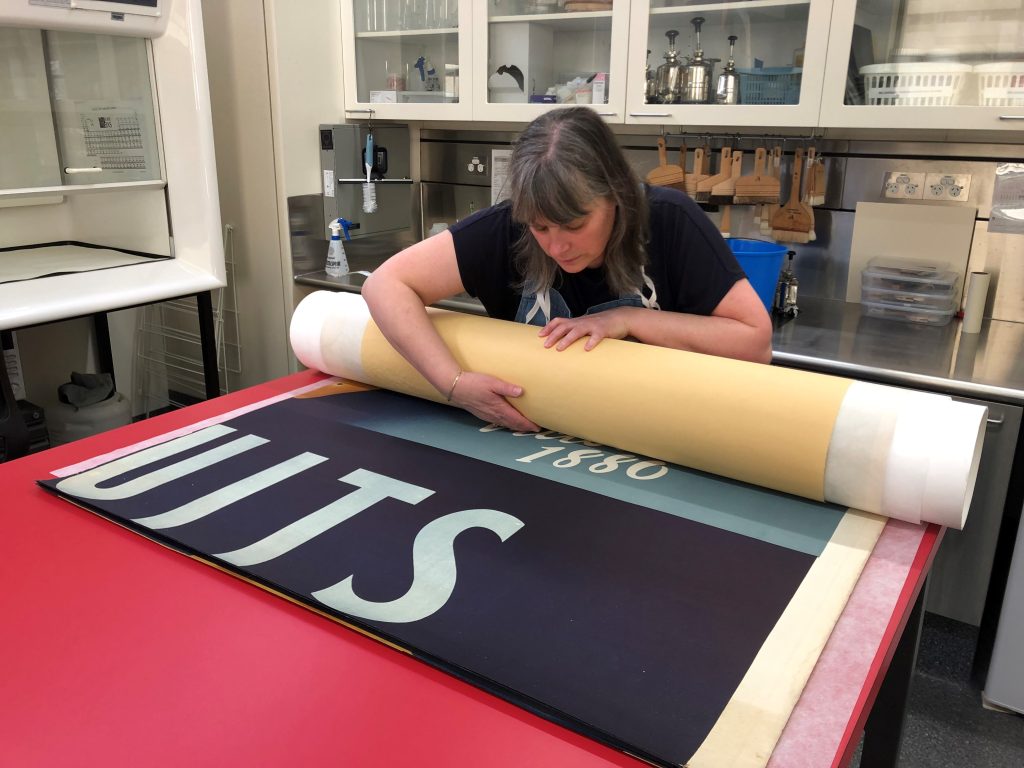Join the Library’s paper conservators as they stabilise an enormous billboard for Brockhoff Biscuit’s Crispette supper cracker. To learn more about the history of the Crispette and its marvellous Melbourne manufacturer, read part 1 of this series.
![THE PERFECT SUPPER CRACKER.. Crispettes Another of BROCKHOFF'S oven-crisp BISCUITS, [ca. 1934], Warner, Ralph Malcolm; H97.146/4](https://blogs.slv.vic.gov.au/wp-content/uploads/2023/02/Digitised-image-1024x510.jpg)
Time: 45 hours
Difficulty: Expert
Serves: Unlimited (patrons)
Ingredients
- Five paper conservators*
- Smoke sponge
- Wheat starch paste
- Deionised water
- Kozo paper
- Brushes & tools (various)
- A very large table
*If you don’t have any conservators in the cupboard, refer to this handy directory from the Australian Institute for the Conservation of Cultural Materials Inc. (AICCM).
Method
1. Assessment
To assess the condition of the item and determine a treatment pathway, the fragile sheets had to first be carefully unrolled and separated. This process revealed vibrant slivers of yellow and white against a background of deep graduating blue, the Brockhoff Baker’s smiling face here, a row of tantalisingly crispy golden crackers there.
Not unlike the crispy golden cracker, the posters were found to be vibrantly coloured but delicate to the touch. There was extensive mechanical damage along the edges of each sheet, particularly at the short end where the rolled stack would have been exposed to knocks and scrapes. This included tears, folds, and large losses, and evidence of sticky tape staining where well-meaning custodians had attempted to repair the damage. Unlike the cracker however, the sheets showed great flexibility, with a propensity for suddenly springing into a tight roll!
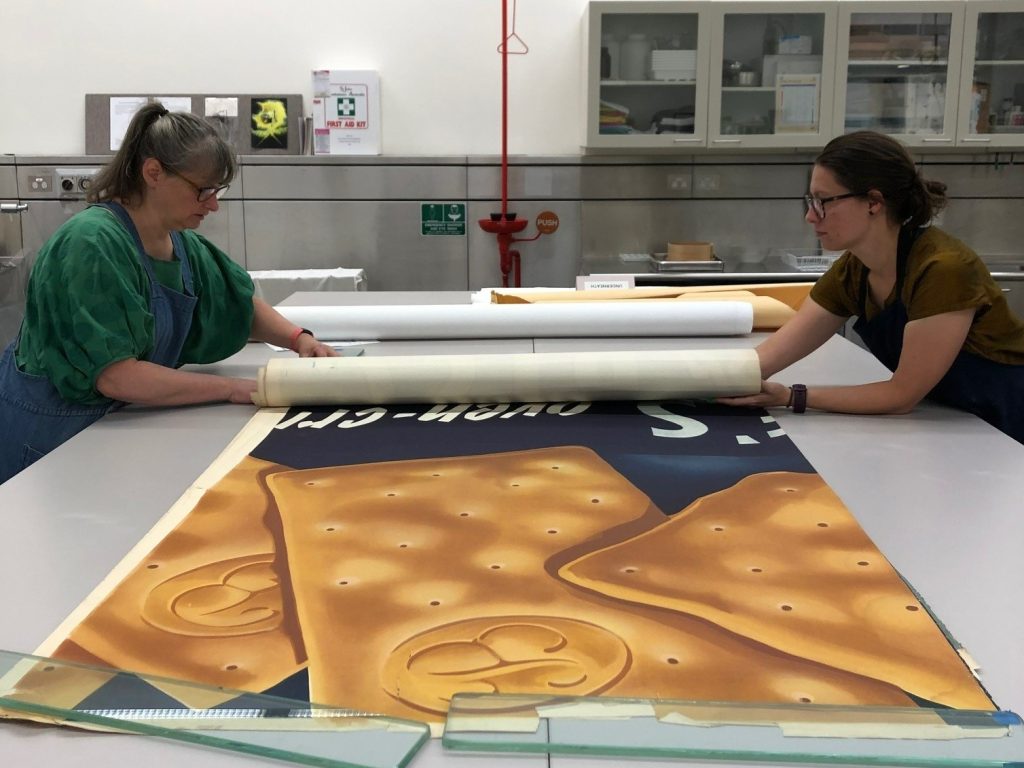
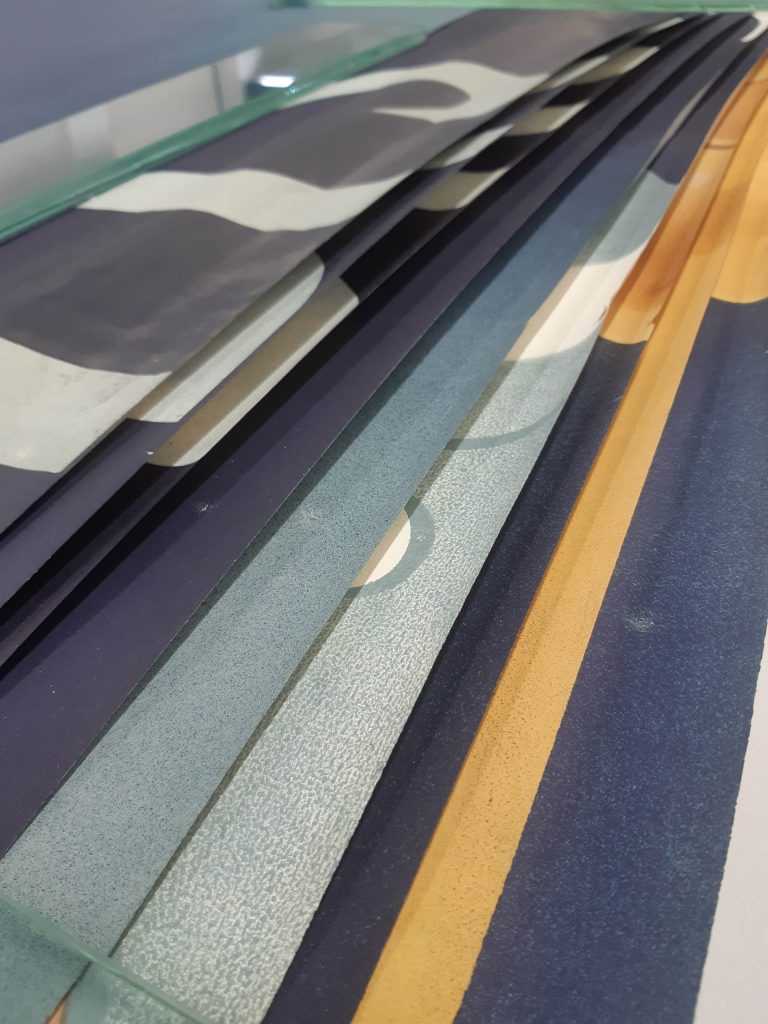
In total there were 18 individual sheets, including 12 large and 6 narrow pieces that when patched together read:
The Perfect Supper Cracker . . Crispettes
Another of Brockhoff’s oven-crisp Biscuits
Established Victoria 1880
The sheets were printed by zinc lithography on heavy machine-made paper by Melbourne’s J. E. Hackett Pty Ltd. While the text ‘Warner’ in the left margin reveals that the poster was designed by none other than renowned commercial artist and illustrator, Captain Ralph Malcolm Warner (1902-1966).

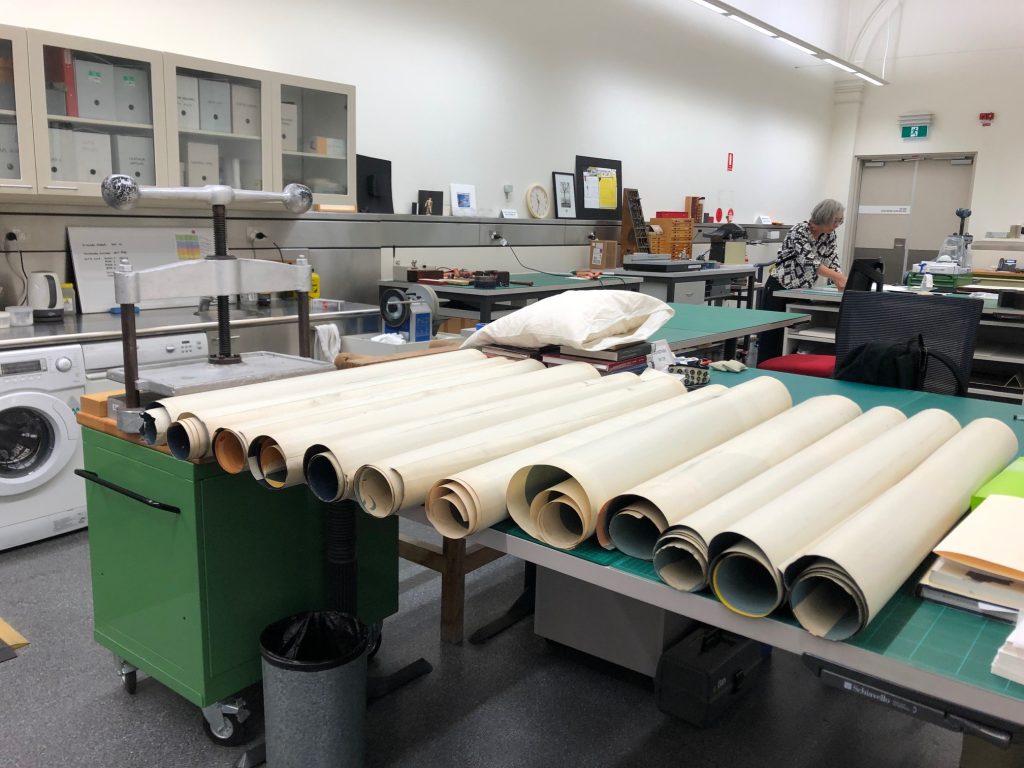
2. Treatment
The aim of treatment was to stabilise the individual sheets, with a focus on surface cleaning and local repair, to ensure safe handling during digitisation. While large losses would be compensated, it was decided that these repairs should not be colour matched to honour the billboard’s history of use as an ephemeral object.
First, any loose surface dirt was gently cleaned away using smoke sponge and soft brushes. Tears were then carefully realigned from the front, before being repaired on the back using a fine Japanese kozo paper and wheat starch paste. Each sheet was placed into a humidification chamber whereby deionised water vapour was gradually introduced to relax the paper fibres, before being pressed between felts for two weeks until dry and flat. After this time, any losses were filled using a sympathetic Japanese kozo paper to reform each sheet and prevent any further damage occurring at these sites.

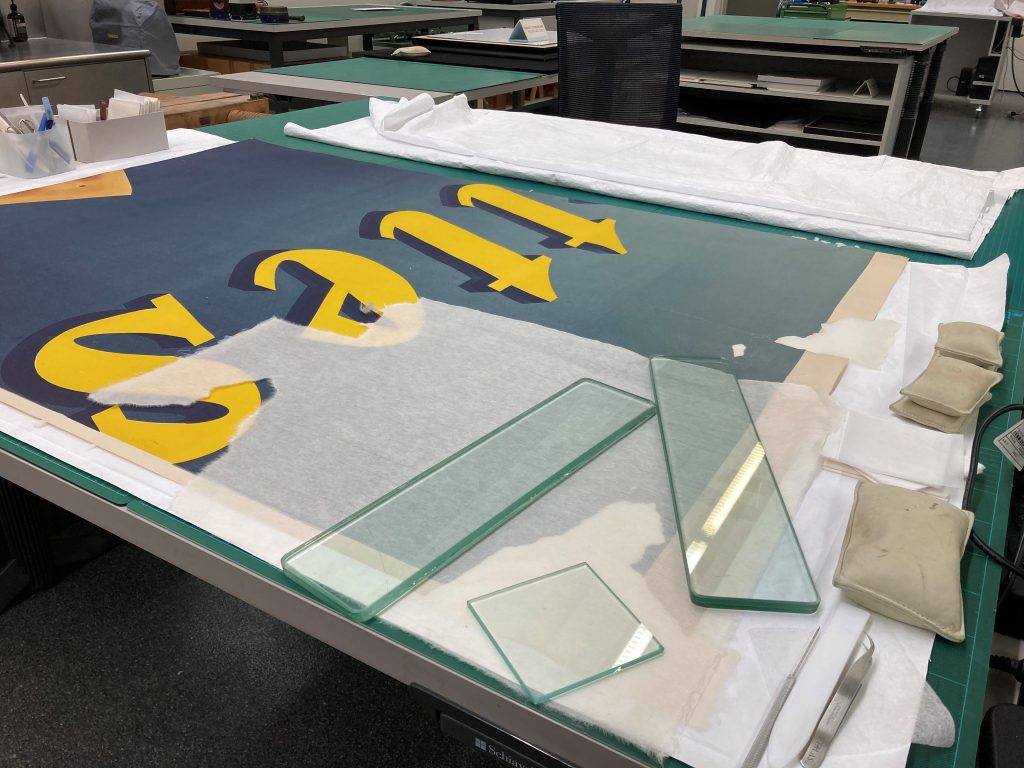
3. Storage
With all sheets placed side by side, the reconstructed billboard would measure 1.6 metres in height by just over 12 metres wide. As you can imagine, flat storage of such an item would pose quite a challenge! And so, once complete, all sheets were carefully interleaved with archival tissue and rolled onto a tube core, before being placed in a custom archival box.
Overall, assessment and treatment of the Crispettes billboard took five paper conservators a total of 45 hours. We don’t think that’s much considering the finished product will ‘serve’ unlimited patrons, now and into the future. Read on to discover how the Digital Production team photographed and digitally stitched together all 18 sheets of the billboard in Part 3: Digitisation.
